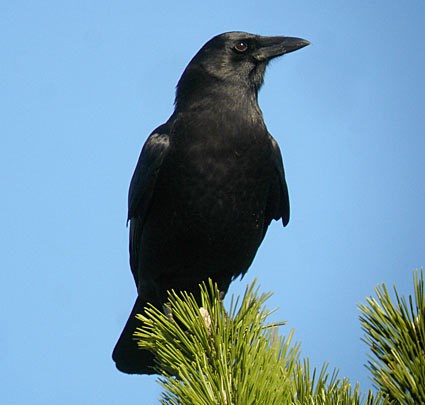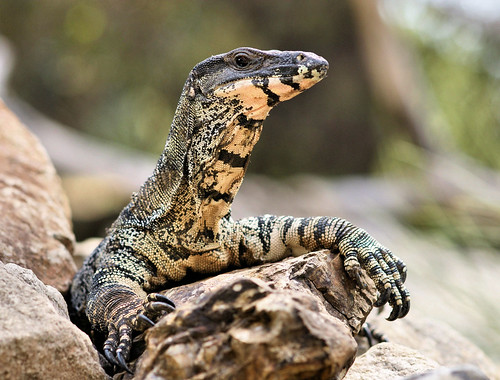Post by DinosaurMichael on Apr 17, 2012 12:38:36 GMT -5
Epicyon - Epicyon haydeni
Epicyon ("near dog") is a large extinct canid genus of the subfamily Borophaginae ("bone-crushing dogs"), native to North America. It lived from the Hemingfordian age of the Early Miocene to the Hemphillian of the Late Miocene (20.6—5.330 Mya. Epicyon existed for about 15.5 million years. Epicyon was one of the last of the Borophaginae and shared its North American habitat with other canids: Borophagus (23.3—3.6 Mya), Paratomarctus (16.3—5.3 Ma), Carpocyon (20.4—3.9 Ma), Aelurodon (23.03—4.9 Ma), and the first emerging wolf, Canis lepophagus appearing 10.3 Ma. Epicyon was named by Joseph Leidy in 1858 as a subgenus of Canis. It was also mentioned as belonging to Aelurodontina by William Diller Matthew & Stirton in 1930. Fossil specimens range from Florida to Alberta, Canada to California; from Nebraska, and Kansas to New Mexico and Texas. Epicyon haydeni existed for 15.3 mya It is synonymous with Aelurodon aphobus, Osteoborus ricardoensis, Osteoborus validus, Tephrocyon mortifer) was named by Joseph Leidy as a subgenus. It was recombined as Aelurodon haydeni by Scott and Osborn in 1890. Further study by Matthew in 1899, Matthew and Gidley in 1904, VanderHoof and Gregory in 1940, McGrew in 1944, Bennett in 1979, (1979) and Becker (1980). It again was recombined as Epicyon haydeni by Baskin in 1980, Voorhies in 1990, (1990), Baskin (1998), Wang et al. in 1999. Morphology: The largest known specimen weighed an estimated 170 kg (374.8 lbs).

Common Warthog - Phacochoerus africanus
The Warthog or Common Warthog (Phacochoerus africanus) is a wild member of the pig family that lives in grassland, savanna, and woodland in Sub-Saharan Africa. In the past it was commonly treated as a subspecies of P. aethiopicus, but today that scientific name is restricted to the Desert Warthog of northern Kenya, Somalia, and eastern Ethiopia. The common name comes from the four large wart-like protrusions found on the head of the warthog, which serve the purpose of defence when males fight as well as a fat reserve. Warthogs range in size from 0.91 to 1.5 m (3.0 to 4.9 ft) in length and 50 to 75 kg (110 to 170 lb) in weight. A warthog is identifiable by the two pairs of tusks protruding from the mouth and curving upwards. The lower pair, which is far shorter than the upper pair, becomes razor sharp by rubbing against the upper pair every time the mouth is opened and closed. The upper canine teeth can grow to 23 cm (9.1 in), and are of a squashed circle shape in cross section, almost rectangular, being about 4.5 cm (1.8 in) deep and 2.5 cm (0.98 in) wide. The tusk will curve 90 degrees or more from the root, and the tusk will not lie flat on a table, as it curves somewhat backwards as it grows. The tusks are used for digging, for combat with other hogs, and in defence against predators—the lower set can inflict severe wounds. Warthog ivory is taken from the constantly growing canine teeth. The tusks, more often the upper set, are worked much in the way of elephant tusks with all designs scaled down. Tusks are carved predominantly for the tourist trade in East and Southern Africa. The head of the warthog is large with a mane that goes down the spine to the middle of the back. There is sparse hair covering the body. Color is usually black or brown. Tails are long and end with a tuft of hair. Common warthogs do not have subcutaneous fat and the coat is sparse, making them suceptible to extreme environmental temperatures.

Epicyon ("near dog") is a large extinct canid genus of the subfamily Borophaginae ("bone-crushing dogs"), native to North America. It lived from the Hemingfordian age of the Early Miocene to the Hemphillian of the Late Miocene (20.6—5.330 Mya. Epicyon existed for about 15.5 million years. Epicyon was one of the last of the Borophaginae and shared its North American habitat with other canids: Borophagus (23.3—3.6 Mya), Paratomarctus (16.3—5.3 Ma), Carpocyon (20.4—3.9 Ma), Aelurodon (23.03—4.9 Ma), and the first emerging wolf, Canis lepophagus appearing 10.3 Ma. Epicyon was named by Joseph Leidy in 1858 as a subgenus of Canis. It was also mentioned as belonging to Aelurodontina by William Diller Matthew & Stirton in 1930. Fossil specimens range from Florida to Alberta, Canada to California; from Nebraska, and Kansas to New Mexico and Texas. Epicyon haydeni existed for 15.3 mya It is synonymous with Aelurodon aphobus, Osteoborus ricardoensis, Osteoborus validus, Tephrocyon mortifer) was named by Joseph Leidy as a subgenus. It was recombined as Aelurodon haydeni by Scott and Osborn in 1890. Further study by Matthew in 1899, Matthew and Gidley in 1904, VanderHoof and Gregory in 1940, McGrew in 1944, Bennett in 1979, (1979) and Becker (1980). It again was recombined as Epicyon haydeni by Baskin in 1980, Voorhies in 1990, (1990), Baskin (1998), Wang et al. in 1999. Morphology: The largest known specimen weighed an estimated 170 kg (374.8 lbs).

Common Warthog - Phacochoerus africanus
The Warthog or Common Warthog (Phacochoerus africanus) is a wild member of the pig family that lives in grassland, savanna, and woodland in Sub-Saharan Africa. In the past it was commonly treated as a subspecies of P. aethiopicus, but today that scientific name is restricted to the Desert Warthog of northern Kenya, Somalia, and eastern Ethiopia. The common name comes from the four large wart-like protrusions found on the head of the warthog, which serve the purpose of defence when males fight as well as a fat reserve. Warthogs range in size from 0.91 to 1.5 m (3.0 to 4.9 ft) in length and 50 to 75 kg (110 to 170 lb) in weight. A warthog is identifiable by the two pairs of tusks protruding from the mouth and curving upwards. The lower pair, which is far shorter than the upper pair, becomes razor sharp by rubbing against the upper pair every time the mouth is opened and closed. The upper canine teeth can grow to 23 cm (9.1 in), and are of a squashed circle shape in cross section, almost rectangular, being about 4.5 cm (1.8 in) deep and 2.5 cm (0.98 in) wide. The tusk will curve 90 degrees or more from the root, and the tusk will not lie flat on a table, as it curves somewhat backwards as it grows. The tusks are used for digging, for combat with other hogs, and in defence against predators—the lower set can inflict severe wounds. Warthog ivory is taken from the constantly growing canine teeth. The tusks, more often the upper set, are worked much in the way of elephant tusks with all designs scaled down. Tusks are carved predominantly for the tourist trade in East and Southern Africa. The head of the warthog is large with a mane that goes down the spine to the middle of the back. There is sparse hair covering the body. Color is usually black or brown. Tails are long and end with a tuft of hair. Common warthogs do not have subcutaneous fat and the coat is sparse, making them suceptible to extreme environmental temperatures.








